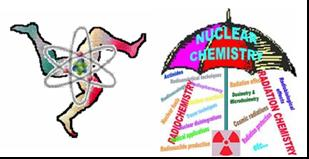Speaker
Mr
Kamol Dey
(Department of Applied Chemistry & Chemical Engineering, University of Dhaka, Bangladesh)
Description
Life is polymeric in its essence: the most important components of living cell (proteins, carbohydrates and nucleic acids) are all polymers. Nature uses polymers both for construction and as part of the complicated cell machinery. Development of polymer is a continuous process for achieving polymer in a specific application under certain environmental condition. The bombardment of the invention of different polymer field is increasing day by day. The natural polymer is biodegradable, easily decomposable and environmentally friendly. Natural polymer, chitosan was extracted from dried prawn shell waste through the preparation of chitin and was characterized by FTIR. Thin film of chitosan was prepared by casting from its 2% chitosan in 2% acetic acid solution. Mechanical properties like tensile strength (TS), elongation at break (Eb) of chitosan film were studied. Eight formulations (M1: 5% HEMA to M8: 40% HEMA) were developed with 2-hydroxyethyl methacrylate (HEMA) monomer in methanol along with photoinitator Darocur-4043 (2%). The film was soaked in those formulations in dissimilar soaking times and irradiated under UV radiation at different radiation intensities for the improvement of physico-mechanical properties of the films. The cured films were then subjected to various characterization tests like Fourier Transformed Infrared Spectroscopy, Polymer Loading (PL), Tensile Strength (TS), Elongation at Break (Eb), Differential Thermal Analysis (DTA), Thermo gravimetric Analysis (TGA) and Water Uptake Tests. The formulation (M6) containing 30% HEMA showed the best performance at 20th UV pass for 1 min soaking time. The highest TS, Eb and PL were found to be 31MPa, 71.25% and 26.38%, respectively, for the same formulation at 20th UV pass for 1 min soaking time. The DTA/TG study showed that the film with M6 formulation at 20th UV pass for 1 min soaking time was more thermally stable than non-radiated chitosan film and the other monomer formulations. The FTIR analysis revealed the crosslinking between HEMA and chitosan. This study creates a new field of research on chitosan using acrylic monomers and UV radiation to improve the inherent chitosan films properties for biomedical application.
Primary author
Mr
Kamol Dey
(Department of Applied Chemistry & Chemical Engineering, University of Dhaka, Bangladesh)
Co-authors
Prof.
A.M.Sarwaruddin Chowdhury
(Department of Applied Chemistry & Chemical Engineering, University of Dhaka, Bangladesh.)
Dr
Ruhul Khan
(Bangladesh Atomic Energy Commission)




